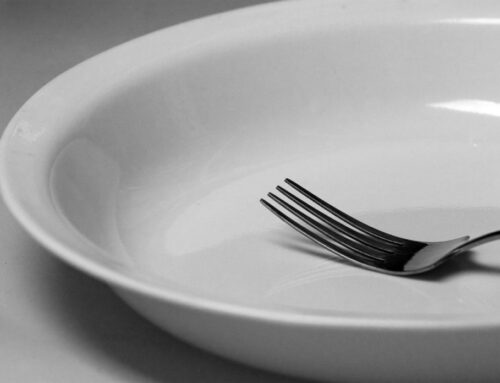Baking is great and steaming is fantastic, but deep frying can be a big fat crime. Boiling won’t expose you to the fat and lard, but too long of a boil and you’ll be left with some kind of food product bereft of any nutrient content which escapes into the liquid. If you want to cook this way and still get all the nutrients, be sure and drink the water after you choke down that “misery biscuit” you’re mistaking for food.
In general, the healthier preference is to steam or broil food. However, stir-frying or using a microwave are also quick methods that can yield delicious results, if done correctly.
How to Stir-Fry
Stir-frying is a way to cook small pieces of meat, fish, poultry or vegetables as quickly as possible over a very high heat. This seals in the flavor and nutrients while giving the food proper cooking time and minimizing the amount of oil used. Use a heavy iron skillet, electric skillet or wok. I prefer a wok since it’s easy to use and clean. The average stir-fry dish takes between 3 to 5 minutes of cooking time.
First, prepare all of the ingredients and sauce before starting to cook. Cut the food into pieces of similar size to increase the exposed cooking surface. Stir frying is always done with small pieces because the cooking time is so short. Preheat the large skillet or wok over high heat until it just begins to smoke. Use nonstick cooking pray or about 1 to 1.5 tablespoons of olive oil. Pour the oil in a circular motion around the top of the wok or skillet. It will flow to the bottom, coating the sides as it goes. Canola or peanut oil are traditionally used because of the high burning point, but I prefer olive oil. To test the temperature of the oil, add a piece of vegetable; if it sizzles, you are ready to cook.
Cook the seasonings first (garlic, onion, ginger, etc.). They flavor the oil and thus, whatever you add subsequently. Cook the seasonings for about 15 seconds, or until very fragrant, stirring and tossing with a spatula. Add the main ingredients in order of approximate cooking times. It is best to add the meat first, then the hard vegetables such as carrots and cabbage, and then soft vegetables such as squash. Stir-fry these ingredients for 1 to 2 minutes or until they are tender-crisp, tossing with a spatula. Keep the food moving to prevent scorching.
The last step is to add the sauce. Bring the mixture to a boil and simmer for a minute or so. Make sure all the ingredients are fully cooked. Taste the stir-fry before serving to correct the seasoning. Add a splash of soy sauce, a squeeze of lemon, or other flavorings to your taste.
Microwave cooking is a natural part of a healthy lifestyle and makes meal preparation a breeze provided you get it right. Here are six useful tips when using a microwave:
1. When a recipe tells you to cover the food tightly, use either a tight fitting lid recommended for microwaving or plastic wrap. Covering keeps food from drying out.
2. As with stir frying, small pieces cook faster.
3. Don’t add salt before microwaving. It can result in food that has a tough, rubbery consistency.
4. Vegetables: For even cooking, make sure they are cut into uniform sizes. A good guide to microwaving fresh vegetables is to allow 6 minutes per pound.
5. Beef: Different techniques are suited to different cuts of meat. Tender beef should be dry-roasted uncovered on a microwave rack while tougher cuts require liquid and are micro waved tightly covered at a lower power level to help tenderize. Use herbs, spices and citrus juices because not only are you enhancing the flavor of meats, but the acid they contain helps tenderize the meat.
6. Fish: When microwaving, check the fish after the minimum cooking time to see if it’s done. Fish will continue to cook after it is removed from the microwave and overcooked fish simply doesn’t taste good. Also, If you use the microwave oven to defrost frozen fish, remember it defrosts quickly. If you overdo it, the fish will toughen.
Since fish is a big of a healthy diet, I thought I’d share with you some of my marinade ideas. Try any one of the following simple sauces for basting or marinating broiled or steamed seafood.
* Fresh Lemon or Lime Juice
Squeeze a small amount of fresh lemon or lime juice directly on the fish or seafood.
* Seasoned Lemon Baste
Combine lemon juice with a dash or two of white wine or vermouth, soy sauce, and/or seasonings of your choice such as dill weed, mustard, pepper, rosemary or thyme.
* Italian-Style Marinade
Marinate fish for 30 minutes in Italian salad dressing and then broil.
* Honey-Curry Baste or Marinade
Marinate fish for 15 to 30 minutes, turning occasionally in a marinade containing 1/3 to1/2 cup soy sauce, 2 tsp oil, 1 Tb sugar, 2 tsp lemon juice, ½ to 1 tsp ground ginger, ½ to 1 tsp minced garlic and 2 Tb sherry. This makes enough for 1 to 2 pounds of fish.
* Garlic-Rosemary Marinade
Combine ingredients of marinade and pour over 1 pound of halibut, swordfish or other fish steaks. Marinate for 35 to 40 minutes and broil or grill. Marinade contains: 2 tsp olive oil, ¼ cup fresh lemon juice, 2 cloves of minced garlic, 1 Tbs minced parsley and 1-1/2 Tbs fresh rosemary sprigs.





